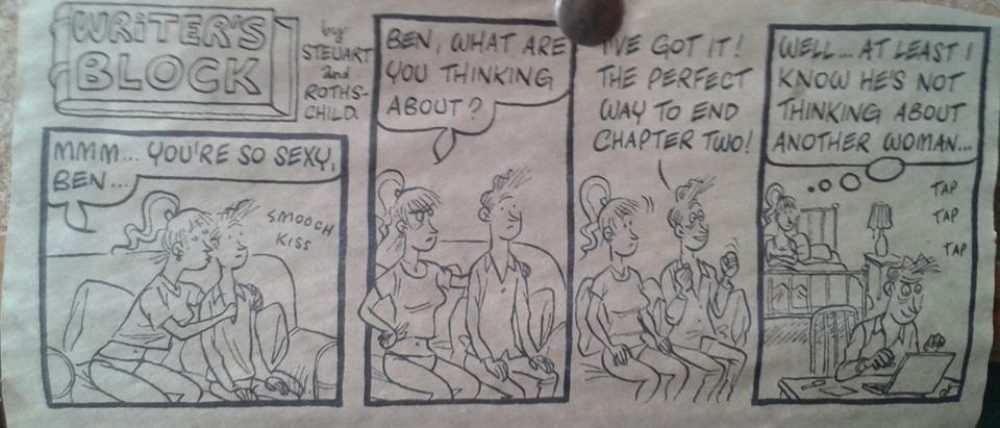“ Oxen and wain-ropes would not bring me back again to that accursed island …”
Almost the last words that Jim Hawkins writes in Treasure Island. So, why is every sequel to Treasure Island a return to Treasure Island? Sometimes it’s blatant, as in the several TV series called Return to Treasure Island. Sometimes it’s subtler: Andrew Motion’s Silver has Jim’s son and Long John Silver’s daughter returning to … guess where? (Although, as it’s their first time there, I suppose they don’t really return …) But even so, there has to be more to Jim’s life story than that accursed island.
Thus H.M.S. Barabbas. We’ve had Young Sherlock Holmes, Young James Bond … here is the Slightly Older Further Adventures of Jim Hawkins.
“There I was, tied to an ox with wain-ropes, being dragged back to the island. ‘Oh, the irony’, I thought …”
That is not how H.M.S. Barabbas begins. Instead:
“We buried the doctor today. The old man nearly made his century, which would not have surprised anyone who knew him …”
Within hours of the suggestion that I write the Further Adventures of Jim Hawkins, the first chapter had written itself. Sir James Hawkins, FRS, MD, wracked by Weltschmerz, is penning his memoirs on the day of the funeral of his mentor and father figure Dr Livesey. Clearly, it’s many years after Treasure Island. So, what did Jim Hawkins do next?
He’s still young at the end of Treasure Island. He’s also rich, and despite his antipathy to strong lengths of twisted cords and cattle, I believe he would have a taste for adventure. He might not go back to the island, but he would also not go back to meekly running the local inn with his mother.
The starting point of all this was thinking of Jim as a kind of anti-hero – a Flashman figure whose life is essentially all one big con. I didn’t want to do that, though. Jim has genuinely been a positive role model for generations of boys and I didn’t want to take that away from Stevenson’s accomplishment.
But Jim is a flawed hero – an interesting mass of contradictions. He is never quite as brave or as strong-willed as he would like to be (until it really counts, of course). He can be a self-righteous prig, ready for a right good slapping. On at least one occasion, the plot of Treasure Island goes on hold for a couple of pages as he pleads with a pirate to consider his immortal soul. (Stevenson was agnostic-verging-on-atheist but he knew how to play to his Victorian gallery.) At the same time he can cheerfully blow the head off Israel Hands with a pair of pistols at point blank range (admittedly in self-defence) and joke about it. Following the plot-convenient death of Jim’s actual father in chapter 3, part of the fascination is watching Jim torn between two father figures: Dr Livesey, upright and moral and just a teensy bit boring; and Long John Silver, wrong but wromantic. There’s a lot of possibility here.
Silver is out of the picture (for now) and Livesey is clearly the man Jim admires most in the world. Obviously, I decided, Jim wants to learn medicine himself. He won’t be able to do that in the unnamed west country village he lives in; he will have to go up to that there London. And what might happen to him on the way? Well, that’s when the further adventures begin, isn’t it?
Suffice to say that Jim doesn’t get as far as London; not yet. He probably will in the next one.
As the plot of H.M.S Barabbas developed, I had to make some decisions.
Tell the story in first person or third? Treasure Island is in first. The problem there would be having to replicate Stevenson’s writing style, which I knew would just sound like someone hamming up nineteenth century gothic prose. It also has the problem that you can only ever show things from the point of view of the narrator (though Treasure Island gets round that by inserting clips from Dr Livesey’s diary, when Stevenson really got bogged down); and, given that this is all in the past tense, it’s a fairly massive clue that the narrator survives. Granted, you can generally surmise that of the hero of any novel, and you can draw your own conclusions from ‘The Further Adventures of Jim Hawkins’, but … In short, I decided third person would work best. The very brief first and last chapters are all the first person you get – about as long as I can carry a convincing Stevenson impression for.
Jim, Livesey and all the other characters from Treasure Island are safely out of copyright (as of 1964) so I can do what I like with them – but to make the Further Adventures mine, I needed more characters of my own. There’s also a singular dearth of female characters in Treasure Island: Mrs Hawkins is the only one, and her only job is for Jim to think of from time to time. So, I introduced more characters, and I’m pleased to say most of the ones I intend to carry on into further books are female.
And what of Jim himself? I can work with his established flaws. Jim can be refined by hardship, having his priggishness knocked out of him, bringing out his innate decency and emerging the better for it. Jim will always be a combination of innocent abroad who is also able to sup with the devil, but he can have self-knowledge too. To set this up, I let one small detail of Treasure Island turn out to be a little white lie that has preyed on Jim’s conscience ever since.
Jim’s greatest handicap as he sets out in life is that there are people who have actually read Treasure Island. We know Jim wrote an account of the expedition at the behest of Livesey, Squire Trelawney and other survivors. In H.M.S. Barabbas I have it that Trelawney had Jim’s account published privately and a handful of people have read it. At best, this colours their perception of Jim, not always accurately or positively. At worst, it tells them that here is a young man who knows where there’s more treasure …
What of the future? Jim should continue to pursue his medical ambitions, at least until the point something else comes up. He can’t have life too easy – he will have to lose that fortune of his to make things more interesting for the reader. There’s a lot of interesting stuff happening in the late eighteenth century, but Treasure Island is never more specific than that it is written in “the year of grace 17__”, and for that reason, I won’t tie it into any specific historic events. Maybe it’s in a parallel universe with the same events, just not in the same order.
I subscribe to the notion that a novel, as a general rule, should always tell the most important thing to have happened to its protagonist at that point in their life. That’s why novel blurbs say things like “his most exciting adventure yet!” rather than “a doddle compared to the last one”. On that basis, every sequel to Treasure Island must out-Treasure Island Treasure Island. That’s quite a challenge. It will be fun to see how I manage.

